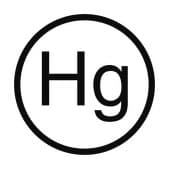A6656
Anti-Human IgG (γ-chain specific)−Agarose antibody produced in goat
IgG fraction of antiserum, saline suspension
About This Item
Source biologique
goat
Conjugué
agarose conjugate
Forme d'anticorps
IgG fraction of antiserum
Type de produit anticorps
secondary antibodies
Clone
polyclonal
Forme
saline suspension
Espèces réactives
human
Ampleur du marquage
≥5 mg per mL
Technique(s)
Ouchterlony double diffusion: suitable
Capacité
0.6 mg/mL binding capacity
Température de stockage
2-8°C
Modification post-traductionnelle de la cible
unmodified
Description générale
Goat anti-human IgG (γ-chain specific)-agarose antibody is specific for human IgG when tested against purified human IgA, IgG, IgM, Bence Jones kappa, and Bence Jones lambda myeloma proteins.
Immunogène
Application
Forme physique
Clause de non-responsabilité

Vous ne trouvez pas le bon produit ?
Essayez notre Outil de sélection de produits.
Code de la classe de stockage
12 - Non Combustible Liquids
Classe de danger pour l'eau (WGK)
WGK 3
Point d'éclair (°F)
Not applicable
Point d'éclair (°C)
Not applicable
Listes réglementaires
Les listes réglementaires sont principalement fournies pour les produits chimiques. Seules des informations limitées peuvent être fournies ici pour les produits non chimiques. L'absence d'indication signifie qu'aucun des composants n'est répertorié. Il incombe à l'utilisateur de s'assurer de l'utilisation sûre et légale du produit.
EU REACH Annex XVII (Restriction List)
Faites votre choix parmi les versions les plus récentes :
Déjà en possession de ce produit ?
Retrouvez la documentation relative aux produits que vous avez récemment achetés dans la Bibliothèque de documents.
Notre équipe de scientifiques dispose d'une expérience dans tous les secteurs de la recherche, notamment en sciences de la vie, science des matériaux, synthèse chimique, chromatographie, analyse et dans de nombreux autres domaines..
Contacter notre Service technique